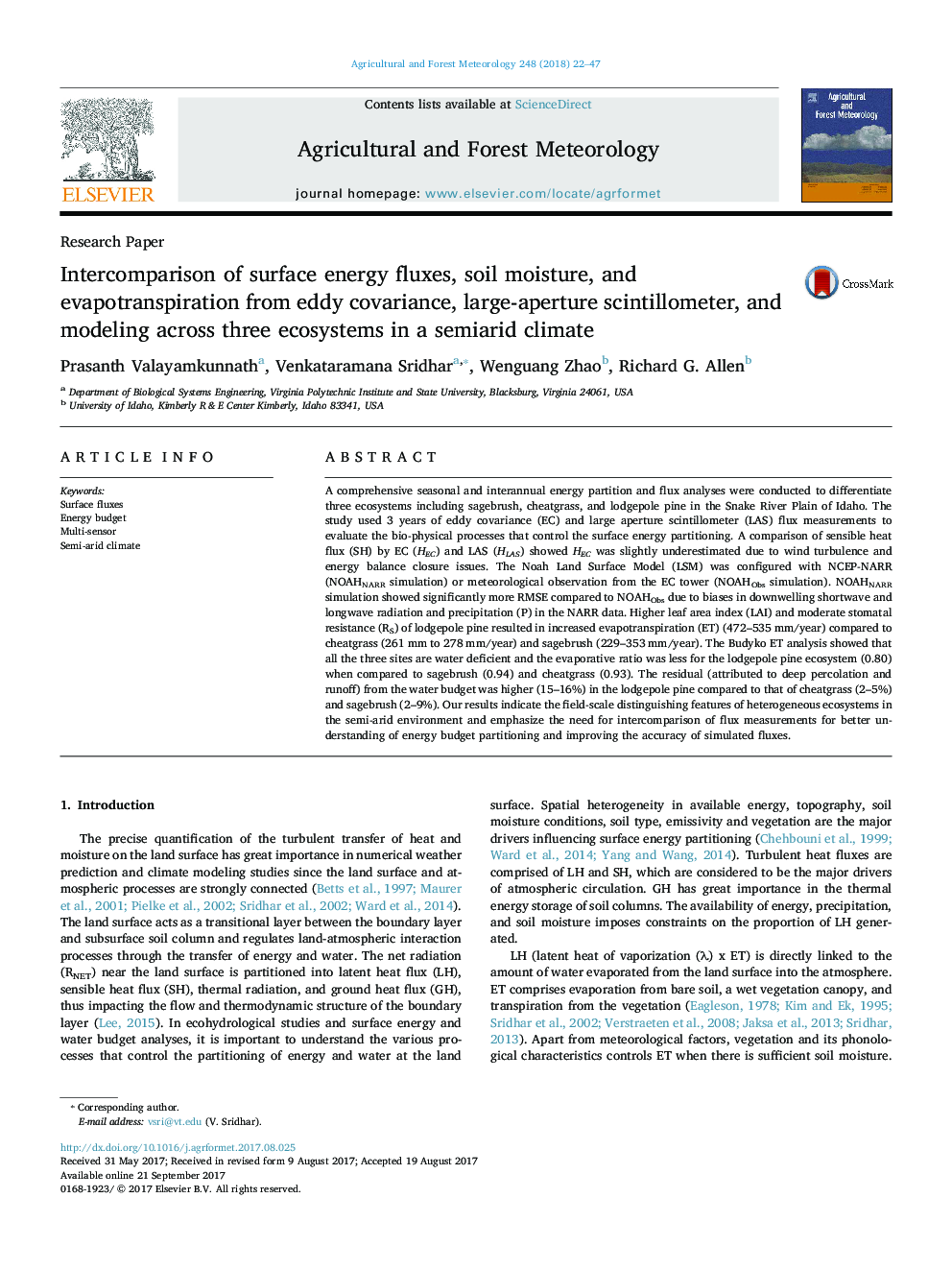| کد مقاله | کد نشریه | سال انتشار | مقاله انگلیسی | نسخه تمام متن |
|---|---|---|---|---|
| 4758865 | 1420853 | 2018 | 26 صفحه PDF | دانلود رایگان |
- Studied three ecosystems from eddy covariance, scintillometer data, and modeling.
- Budyko-ET analysis exhibits water-deficit conditions despite variabilities.
- Winter and spring moisture surplus drives majority of summer evapotranspiration.
- ET is constrained by aerodynamic resistance and green vegetation fraction.
- Understanding the role of ecosystem function essential to parameterize the LSMs.
A comprehensive seasonal and interannual energy partition and flux analyses were conducted to differentiate three ecosystems including sagebrush, cheatgrass, and lodgepole pine in the Snake River Plain of Idaho. The study used 3 years of eddy covariance (EC) and large aperture scintillometer (LAS) flux measurements to evaluate the bio-physical processes that control the surface energy partitioning. A comparison of sensible heat flux (SH) by EC (HEC) and LAS (HLAS) showed HEC was slightly underestimated due to wind turbulence and energy balance closure issues. The Noah Land Surface Model (LSM) was configured with NCEP-NARR (NOAHNARR simulation) or meteorological observation from the EC tower (NOAHObs simulation). NOAHNARR simulation showed significantly more RMSE compared to NOAHObs due to biases in downwelling shortwave and longwave radiation and precipitation (P) in the NARR data. Higher leaf area index (LAI) and moderate stomatal resistance (RS) of lodgepole pine resulted in increased evapotranspiration (ET) (472-535Â mm/year) compared to cheatgrass (261Â mm to 278Â mm/year) and sagebrush (229-353Â mm/year). The Budyko ET analysis showed that all the three sites are water deficient and the evaporative ratio was less for the lodgepole pine ecosystem (0.80) when compared to sagebrush (0.94) and cheatgrass (0.93). The residual (attributed to deep percolation and runoff) from the water budget was higher (15-16%) in the lodgepole pine compared to that of cheatgrass (2-5%) and sagebrush (2-9%). Our results indicate the field-scale distinguishing features of heterogeneous ecosystems in the semi-arid environment and emphasize the need for intercomparison of flux measurements for better understanding of energy budget partitioning and improving the accuracy of simulated fluxes.
Journal: Agricultural and Forest Meteorology - Volume 248, 15 January 2018, Pages 22-47
